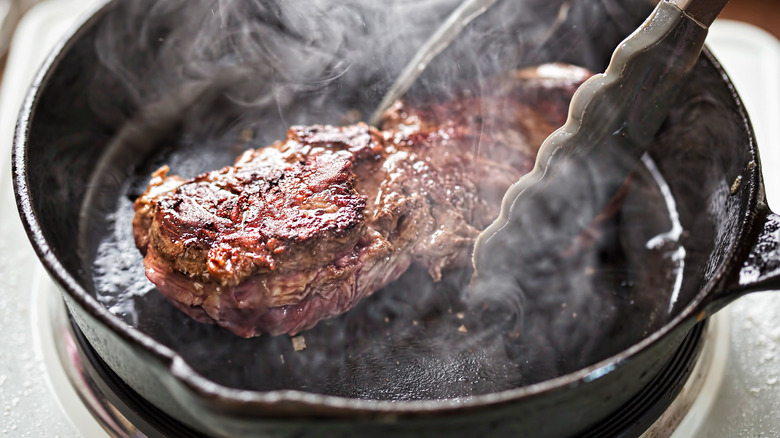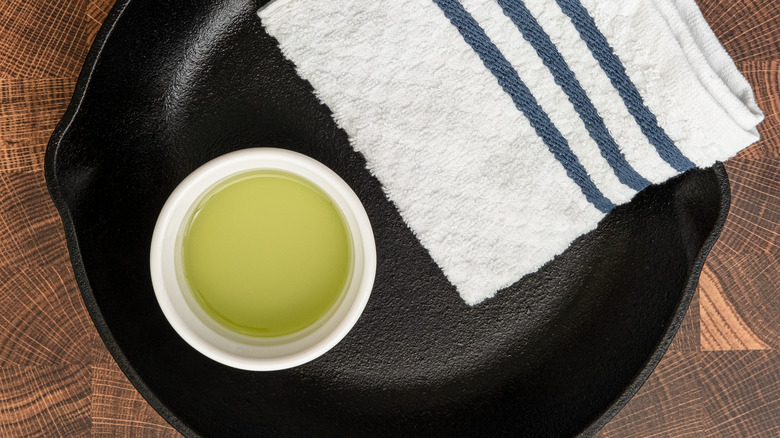Is It Possible To Over-Season A Cast Iron Pan?
Few kitchen tools are as versatile and resilient as the cast iron pan. These metal marvels can be used for myriad dishes, can work in an oven, on the stove, on your barbecue grill, and even over an open fire, and — if taken care of well enough — can last not only your lifetime but the lifetimes of your kids and grandkids as well.
Cast iron skillets are unique in that, unlike any other pan, you have to season them to get the most out of them. Because of the peculiarities of cast iron as a material, a thin layer of unsaturated oil or shortening must be rubbed into and then baked onto the cast iron, according to the Science of Cooking. The best way to do this, recommends Lodge, is to put the pan upside-down in the oven, to keep the oil from pooling, and then bake at 450-500 degrees for an hour. Make sure you put some aluminum foil on the bottom rack to catch any dripping oil.
This process ensures that the cast iron does not rust, that food does not stick to the surface, and that clean up is easy, per Taste of Home. It also gives your cast iron pan its signature black sheen.
But is it possible to overdo it when seasoning a pan?
When is too much too much?
Although it seems odd, it is technically possible to over-season a skillet. Too much oil baked into the cast iron will cause it to polymerize unevenly and eventually will cause the surface of the skillet to flake. Adding too much oil when seasoning will also cause your pan to become sticky, notes Lodge.
So how much oil is the right amount? Home Cook World found that ¼ teaspoon of flaxseed oil rubbed with a paper towel or cloth onto the surface of the pan and another ¼ teaspoon on the sides, handle, and bottom is the perfect amount to get a nice, even coat.
If you do over-season your pan, don't worry. According to Southern Living, use hot water and a firm brush or stainless steel scrubber to get all the old oil off. Then, rinse, allow the pan to dry thoroughly, and then simply repeat the seasoning process.

